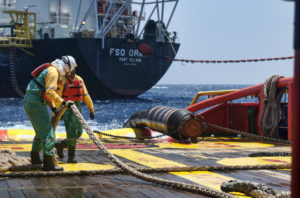The interpretations are the following:
Interpretation of regulation 1.23 – Deadweight to be stated on certificates
‘Even-keel hydrostatics should be used to determine the regulatory deadweight to be entered on relevant statutory certificates.’
Interpretation of regulation 36.2.10 – Terminal hose flush water

‘When the master of an oil tanker agrees to accept terminal hose flush water from a Single Point Mooring (SPM) or a Conventional Buoy Mooring (CBM), that flush water should be categorized as the disposal of residues under regulation 36.2.10. Appropriate entries should be made under Item J of Part II of the Oil Record Book. The following are examples of how these entries should be made:
1 At the load port where the flush water is received by the tanker, use the suggested wording for remarks:
(J) 55 At the request of (terminal xxxx), terminal line flush water (seawater) has been loaded into the ship’s xxx tank
56 xxx m³ flush water
57.4 Transferred from terminal xxxx line/hoses. Total quantity in xxx tank ….. m3;
and
2 At the discharge port where the flush water is disposed of by the tanker:
(J) 55 xxx tank
56 xxx m³, quantity retained in tank: xxx m3
57.1 a quantity of xxx m3 terminal line flush water received at the loading port terminal (xxx) was disposed/transferred to terminal xxx facility.’
Source: MEPC.1/Circ.872
Contact us to receive a professional advisory in your area of interest.
